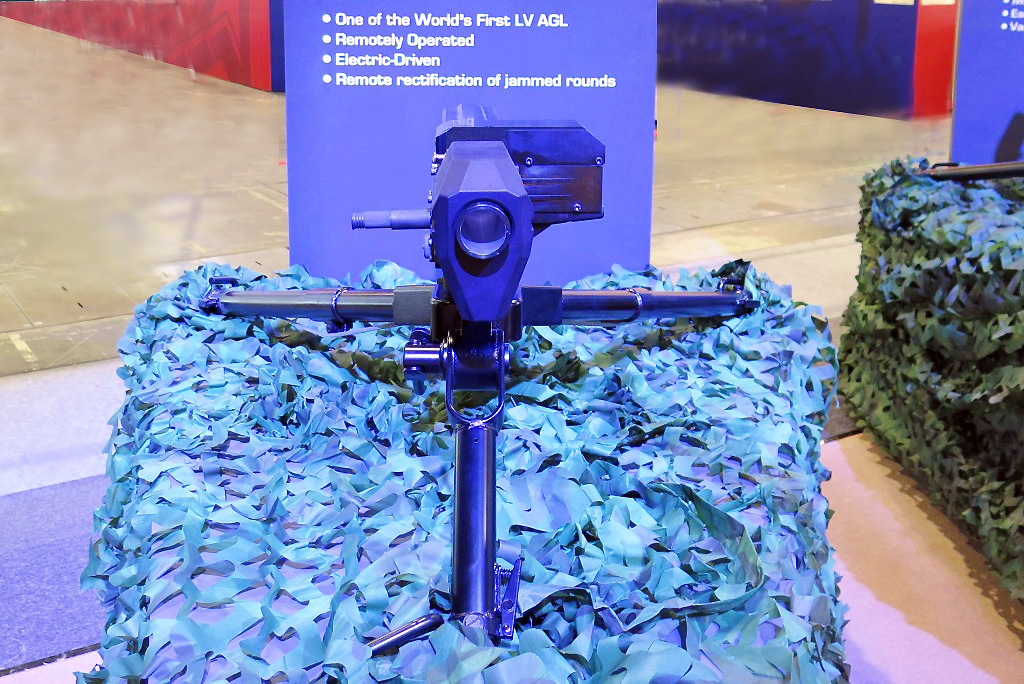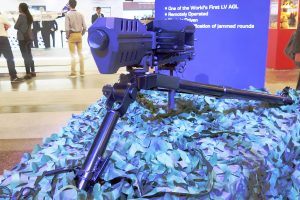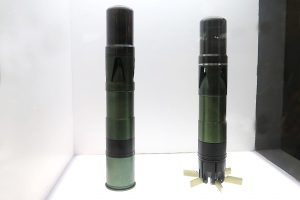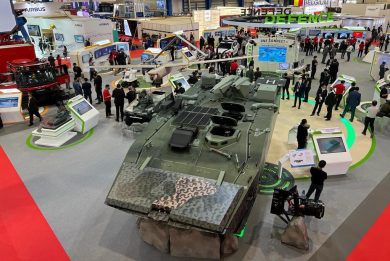
Singapore Airshow – ST Engineering adds new products to its low velocity grenade portfolio
At the Singapore Airshow ST Engineering unveiled new products that are becoming part of its low velocity grenade portfolio, a low velocity automatic grenade launcher and a wall braker low velocity ammunition
The Singapore defence champion has a tradition in the 40 mm ammunition field and is also busy in exporting its technologies to other countries. At the 2024 edition of the Singapore Airshow the focus was on low velocity 40×46 mm grenades, new systems being unveiled both in the weapons and in the ammunition domain.
A requirement coming mostly from law enforcement was the availability of an automatic grenade launcher capable to fire low velocity grenades, among which we find a number of less than lethal types, typically used by police units in riot control situations. Until now such forces were equipped with manportable grenade launchers containing up to six rounds, remaining exposed to aggression.

The company thus launched the development of its new Low Velocity Automatic Grenade Launcher (LV-AGL). The LV-AGL is designed to be fitted to remotely controlled weapon stations (RCWS) or pintles mounted on vehicles, or on a light tripod. Electrically driven the launcher is approximately 900 mm long and has a 12-inh (304.8 mm) barrel with the typical 1 in 48” right hand rifling twist ensuring grenade stabilisation in flight. Ammunition are fed from the left, LV grenades being provided in a linked belt, as it is the case in high velocity AGLs. No exact data on the rate of fire were provided, the system being still in development, however EDR On-Line understood this should be around 50 rounds per minute, short of one per second, with a maximum range of 150-200 metres depending on the type of round.
The LV-AGL designed by ST Engineering will allow a much greater volume of fire in when police units need to disperse large crowds, while keeping police officers under armour. Being able to fire both less-than-lethal and lethal rounds, it gives considerable flexibility allowing adequate response to different types of situations. This might extend to military units engaged in operations other than war; although the current trend is towards symmetric confrontations, this does not exclude the need to face again asymmetric threats. Moreover, the lightweight LV-AGL, a final data on its weight was not provided the weapon being in the initial test development phase, with first firing forecasted for mid-2024.

The other novelty showcased at the Singapore Airshow was the 40 mm Low Velocity Wall Penetrator (LV-WP) round, another product that can be potentially used by both police and military forces. The new round does not pretend to replace bunker-buster grenade launchers but provides a capability to the infantryman who deals with a threat hidden inside a brick building. ST Engineering states that its new product is capable to penetrate a one-layer hollow brick wall. To do so kinetic energy is exploited, and being the round destined to low velocity launchers this cannot be attained at launch. This means a rocket motor was added. The cartridge is about 325 mm long and has a weight of 950 grams, the projectile mass being 900 grams. The round mass being considerably higher than normal, the explosive charge allows it to reach a muzzle speed of only 30 m/s compared to the 74-84 m/s of standard low velocity ammo; at a safe distance from the soldier, a rocket motor is ignited that accelerates the round up to 150 m/s ensuring the needed kinetic energy to defeat the target. The round being still in final qualification tests, no data on the minimum range was provided (when the motor allow it reaching the maximum speed, a key data when operating in urban areas where short-range engagements are typical), while effective range is 150 metres.
The rocket motor is located at the front of the LV-WP grenade; it has a hardened front body, needed to penetrate the wall, while four exhausts for the jets are visible in the rear of the front element of the round. This is followed by the grenade, which EDR On-Line understood having a standard blast-fragmentation warhead, with a lethal radius of around 5 metres. This is followed by the rear assembly with stabilisation fins, which open once the round leaves the barrel.
When the grenade hits the wall the hardened case of the rocket motor breaks the brick; the deceleration of the round is felt by the fuse, which is fitted with a delay allowing the grenade warhead to detonate when the round has gone through the wall. According to information released by the company the fuse is programmable, hence the delay can be set according to customers’ requirements.
As said the LV-WP grenade is undergoing final testing, ST Engineering not commenting on a possible production date.
Photos courtesy J. Roukoz



